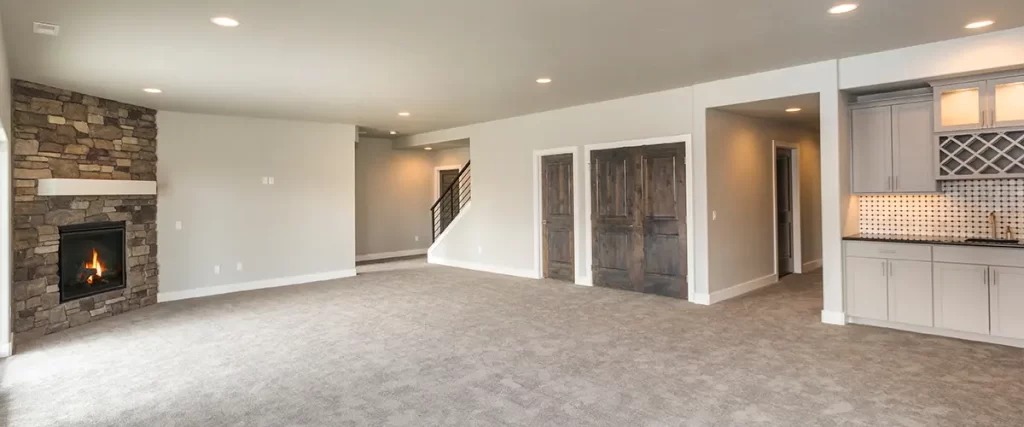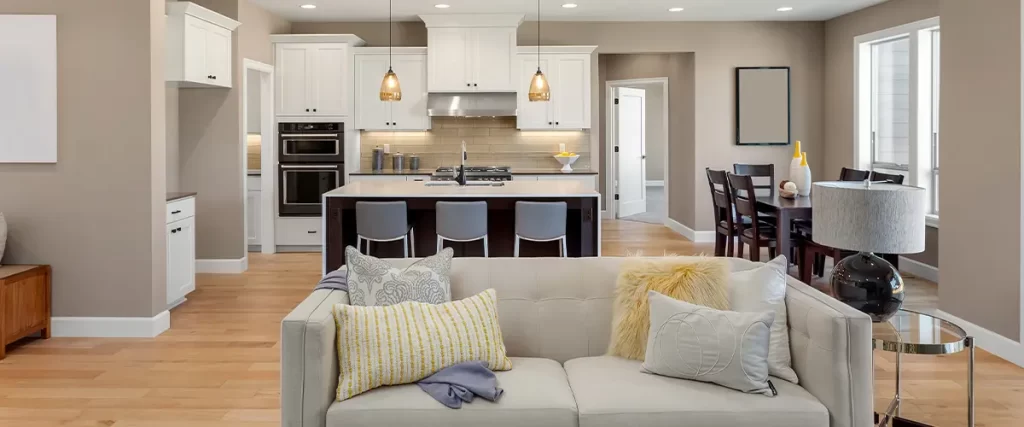Lee’s Summit is a city that wears its history proudly. From charming Victorian-era homes to mid-century gems, our neighborhoods are dotted with architectural treasures that tell the story of our past.
But as a homeowner in Lee’s Summit, you might be facing a unique challenge: how do you preserve the historical beauty of your home while still enjoying the comforts and efficiency of modern living?
If you’re asking yourself this question, you’re not alone. Many Lee’s Summit homeowners are passionate about keeping the character of their historic homes intact. At the same time, they want functional updates that support today’s lifestyle. The good news? With the right approach, you can absolutely have both.

Why Historic Home Renovations Matter in Lee’s Summit
Lee’s Summit boasts a rich architectural tapestry, with homes that reflect different eras and styles, from ornate Queen Anne-style houses to the sturdy simplicity of Craftsman bungalows. These homes are more than just buildings. They represent a living history of the city.
Preserving them is about more than personal pride or aesthetics; it’s also about community identity and even property values. When historic homes are well-maintained and thoughtfully updated, they help maintain the unique feel of Lee’s Summit’s neighborhoods, attracting residents and visitors alike.
Understanding Lee’s Summit’s Historic Districts and Guidelines
Before picking up a hammer or calling in a contractor, it’s important to understand what regulations might apply to your home.
Lee’s Summit has several recognized historic areas, and if your home is in one, specific guidelines from the Lee’s Summit Historic Preservation Commission may apply. These guidelines aim to preserve the historical integrity of structures, especially exterior features visible from the street.
Typical regulations include:
- Restrictions on window replacements
- Guidelines for roofing materials
- Requirements for siding restoration vs. replacement
- Limitations on new additions
Understanding these rules early can help avoid costly mistakes and ensure your renovation plans are approved smoothly.
What to Preserve: Identifying Key Historic Features
When renovating, the goal isn’t to gut and replace everything. Instead, try to highlight and protect the unique elements that give your home character. Here are some common architectural features to prioritize:
- Original woodwork: Crown molding, baseboards, and built-ins
- Windows and doors: Wood-framed windows and solid core front doors
- Rooflines and dormers: Original structures that define the home’s silhouette
- Porches: Especially with turned posts or decorative brackets
- Flooring: Hardwood floors that can often be refinished instead of replaced
Restoring these elements instead of replacing them can keep the historic charm alive while boosting long-term value.
Updating for Comfort Without Sacrificing Character
You can have a historically authentic home that also meets modern standards. It just takes a strategic, respectful approach. Here are smart ways to upgrade without erasing your home’s heritage:
1. Energy-Efficient Retrofits
Lee’s Summit sees cold winters and humid summers, which means your home needs to be energy-efficient. Instead of replacing original windows, consider:
- Adding weatherstripping
- Installing storm windows
- Using insulated drapes
Upgrade insulation in attics and crawl spaces where it won’t interfere with historic features.
2. Modern Plumbing and Electrical
Old homes weren’t built for today’s tech-heavy lives. Updating wiring and plumbing is essential for safety and convenience. Just make sure to run new systems behind walls or through crawlspaces to preserve visible features.
3. Kitchens and Bathrooms
You can modernize kitchens and bathrooms while keeping them in tune with the rest of the house:
- Choose shaker-style cabinets or vintage-inspired hardware
- Use subway tile or marble for a timeless look
- Hide modern appliances behind cabinet panels
Sourcing Materials: Finding the Right Fit
A key challenge in historic renovations is finding materials that match the original aesthetic. Here’s where doing your homework pays off.
Look for:
- Salvaged materials from architectural salvage yards
- Wood flooring that matches the original width and grain
- Reproduction hardware from heritage suppliers
- Lime-based mortars for masonry repairs
For local sourcing, the Missouri Preservation Resource Center can be a great starting point.
Working with the Weather: Climate Considerations in Lee’s Summit
Missouri’s climate means your renovation materials need to stand up to a range of conditions:
- Humidity: Use moisture-resistant paints and finishes
- Temperature fluctuations: Choose materials that expand and contract without cracking
- UV exposure: Use UV-resistant sealants on wood elements to prevent fading and warping
Interior Design Tips for Historic Homes
Your home’s interior should reflect its character too. You don’t need to go full period-authentic, but blending vintage charm with modern touches can make your space both beautiful and livable.
Consider:
- Light fixtures in vintage or reproduction styles
- Soft, neutral color palettes to highlight architectural detail
- Gallery walls that mix modern art with antique frames
The Best Manufacturers of Historic Renovation Materials
For authentic restorations, sourcing from top-notch manufacturers can make all the difference. These companies provide materials that maintain the integrity of your historic home.
- Baird Brothers – Specializes in high-quality hardwood components, perfect for matching trim and molding.
- Crown Point Cabinetry – Offers custom cabinets in historically inspired styles.
- Marvin Windows – Known for wood-clad and wood windows that meet historic district requirements.
- Vintage Hardware & Lighting – Carries reproduction door knobs, hinges, and lighting.
- The Wm. B. Morse Lumber Co. – A trusted name for millwork that matches vintage profiles.

FAQ: Historic Home Renovations in Lee’s Summit
Can I paint my historic home any color I want?
If you’re in a designated historic district, there may be guidelines on appropriate color palettes. Check with the Historic Preservation Commission.
How do I know if my home is considered historic?
Homes over 50 years old with architectural significance or historic relevance may qualify. The city or a preservation consultant can help you determine this.
Do I need special permits for renovations?
Possibly. Structural changes, especially in historic districts, usually require permits and approval from local authorities.
Are there any financial incentives for restoring a historic home?
Yes! Missouri offers historic preservation tax credits for qualified renovations.
Is it worth restoring instead of tearing down and rebuilding?
Absolutely. Preserving a historic home not only protects our community’s heritage but often adds to your property value.
Final Thoughts: Balancing the Old and the New
Historic home renovation in Lee’s Summit is about striking the right balance between preservation and progress. It’s not always easy—but it’s deeply rewarding. With the right knowledge, approach, and team behind you, you can enjoy a home that honors its past and supports your future.
If you’re ready to talk about your own historic renovation journey, contact us at (816) 970-9256. We’d love to hear about your kitchen remodeling project and how we can help you preserve its legacy.
